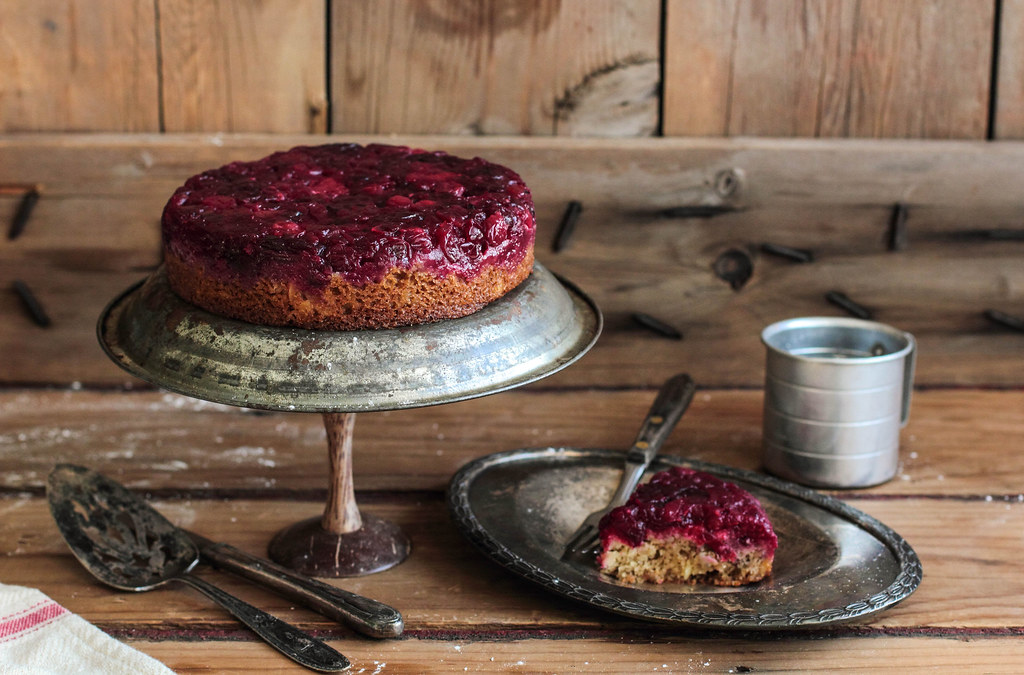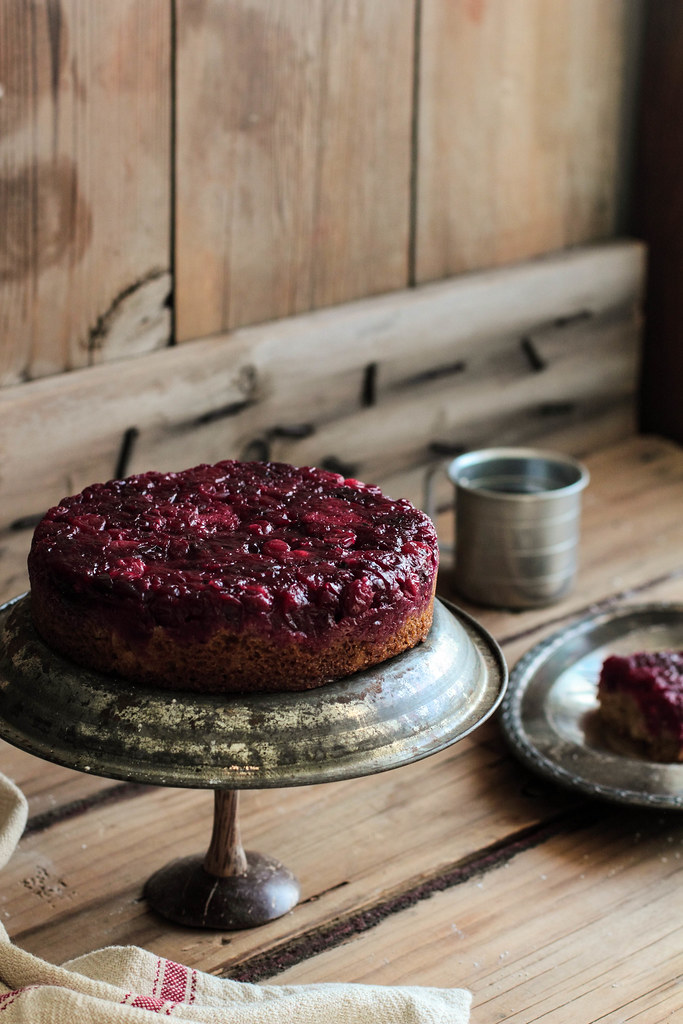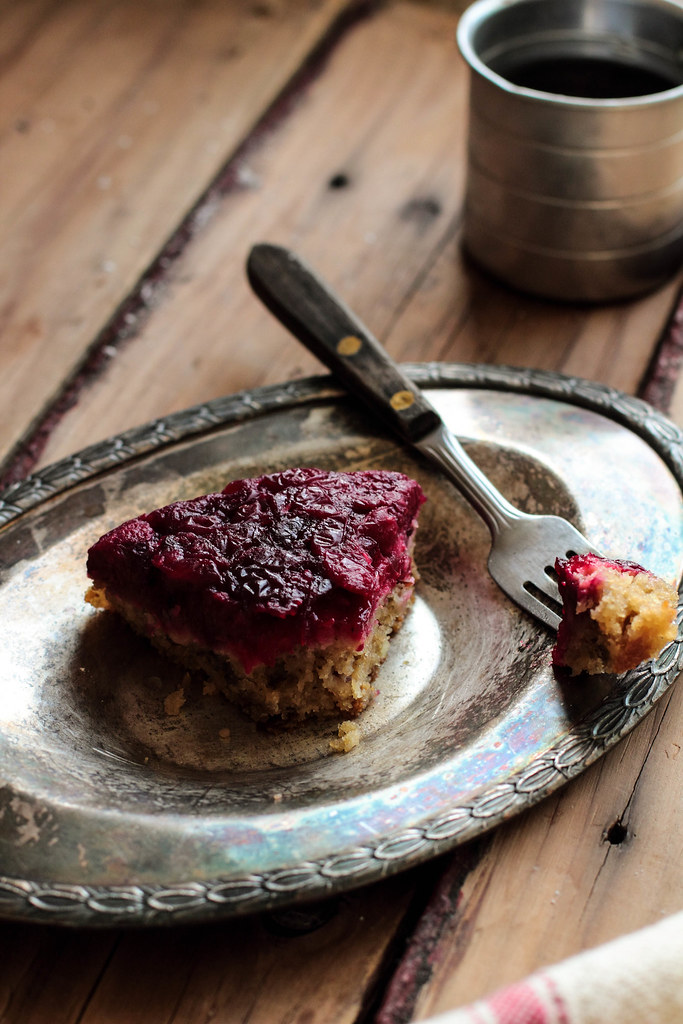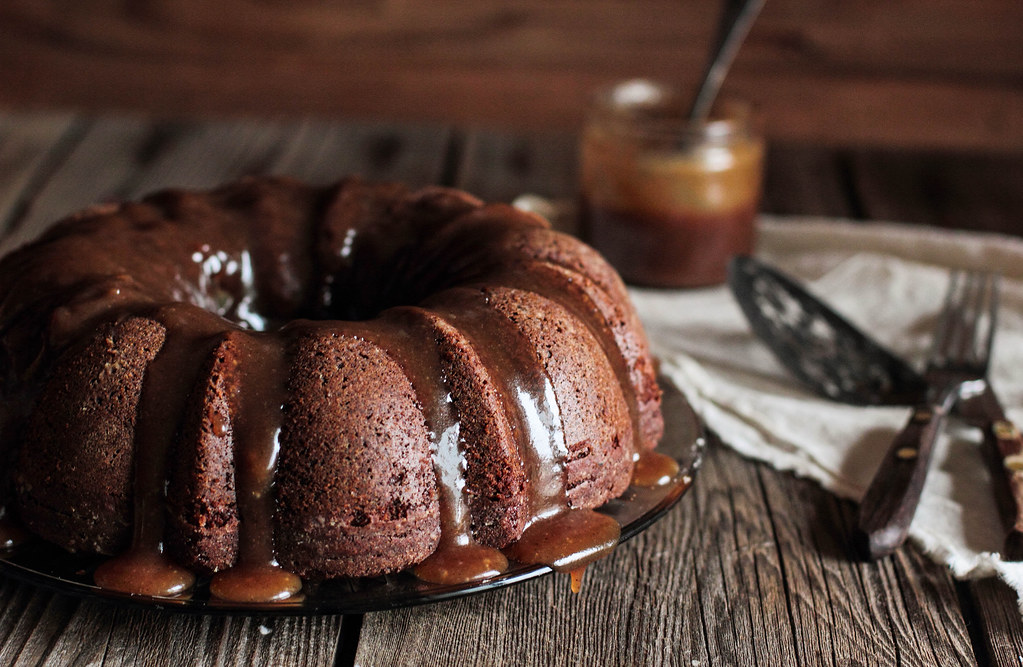
It was the end of summer. I sat on top of a suitcase, using my weight to close it an extra inch so I could draw the zipper closed. Brushing myself off, I stood back and surveyed my handiwork. Three suitcases lay side-by-side, holding all of my material possessions within their zippered walls. I was moving the next morning, fifteen hundred miles and a country away, going to Montreal for graduate school. This wasn't my first time leaving home, but it was my first time leaving everyone and everything I knew behind. As excited as I was, it was difficult to say goodbye.
For the first few weeks, I fumbled around as a non-French speaker in a French city, learning to read foreign signs and labels and trying to collect enough language to make it through a cash register exchange. As much as I was falling in love with the city and culture, there was still a part of me that ached for the familiarity of my old life. Growing up, the kitchen was where family and friends converged, exchanging stories over warm cookies and cold milk. I especially missed this gathering place.
Before the move, I had begun learning how to bake. It felt natural to continue that quest as I adjusted to my new life, so I began spending more time in the kitchen, finding a little of the familiarity I had been longing for.
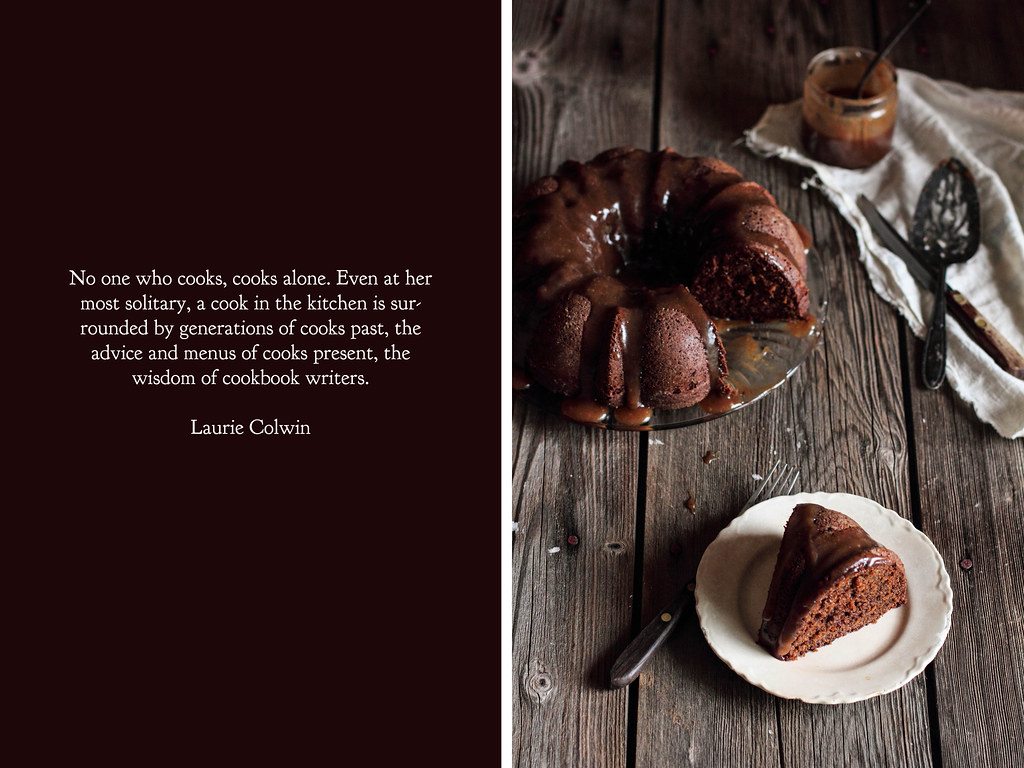
When I first learned the basics of cooking, my mother would get phone calls from me daily, asking questions about everything from cooking chicken to beating egg whites for meringue. Living so far from her now meant that my mother was no longer a simple call away. When I ran into kitchen trouble, I was on my own. Despite this, our past conversations hovered in the air, her wealth of knowledge in my memory and her voice echoing in my mind. As I cooked dinner, she reminded me of the ratios for cooking rice and how to make toast without a toaster. Though she didn’t know it, my mother continued to guide me through the kitchen, stubbornly refusing to let me forget everything she had taught me over the years.
Lessons from my grandmother soon followed in my tiny kitchen. Her voice revealed that coffee brought out the flavor of chocolate and reminded me that butter made everything better. Her gnarled hands showed me how to knead bread as I struggled with my first ventures into yeast. I remembered watching her cook, sprinkling salt into her palm to finish off a dish and throwing the rest over her shoulder. Though I felt awkward about it, I followed her practiced motions, feeling as though there must be a greater reason for it. I couldn’t quite see the purpose, though; I envisioned my feet tracking salt over the rest of the apartment and me having to clean it up later. Perhaps there were some kitchen tricks I could do without after all.
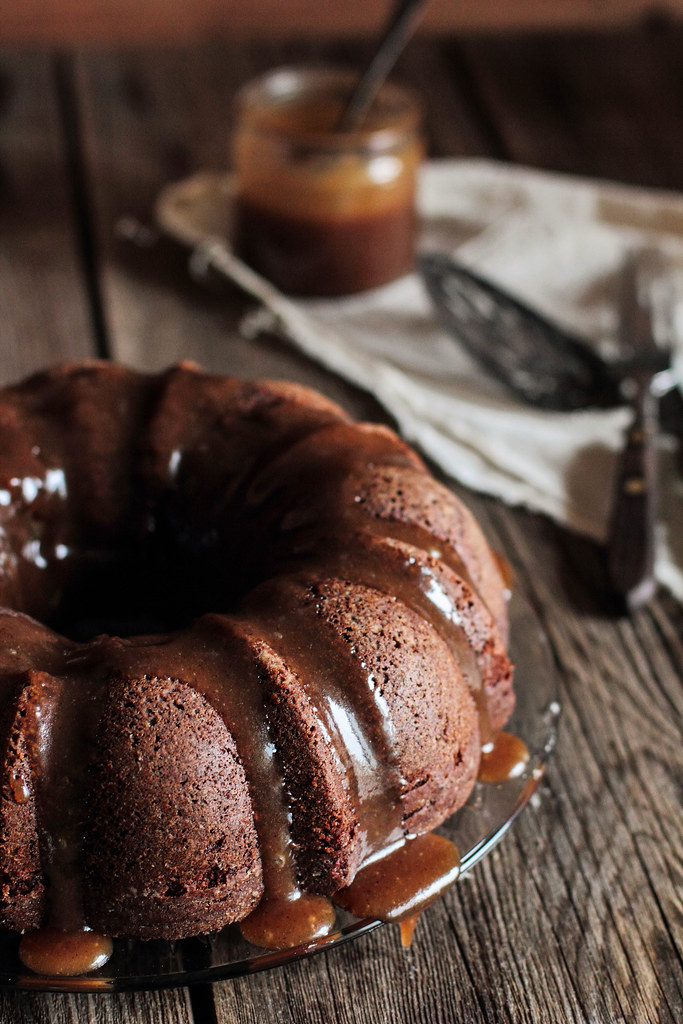
Re-runs of Julia Child’s cooking shows found their way into my apartment and I watched as she whisked up omelets and stewed Boeuf Bourguignon. Though she didn’t teach me how to cook, she did teach me that a little clumsiness and awkwardness in the kitchen was perfectly acceptable. After dropping two frosted cakes and a pitcher of blended margaritas onto the floor (the latter of which I’m still not ready to talk about), the solidarity I had with Julia made scraping the frosting off the floor more bearable. I imagined Julia whispering that if I quickly picked up the cake and placed it back on the stand no one would notice. Even though Julia was quite wrong—my crime was painfully obvious—putting it back on the stand did make it easier to eat with a fork.
Several months after I moved, during a quiet autumn afternoon, my mother came to visit. The morning before she arrived I set out to make her a welcoming cake. I had just finished paging through a food memoir and a recipe for gingerbread with caramelized pears caught my eye. Though I had never worked with fresh ginger or caramel, Julia’s fearless attitude and my grandmother’s voice guided me in using fresh spices and creating the perfect caramel without a candy thermometer.
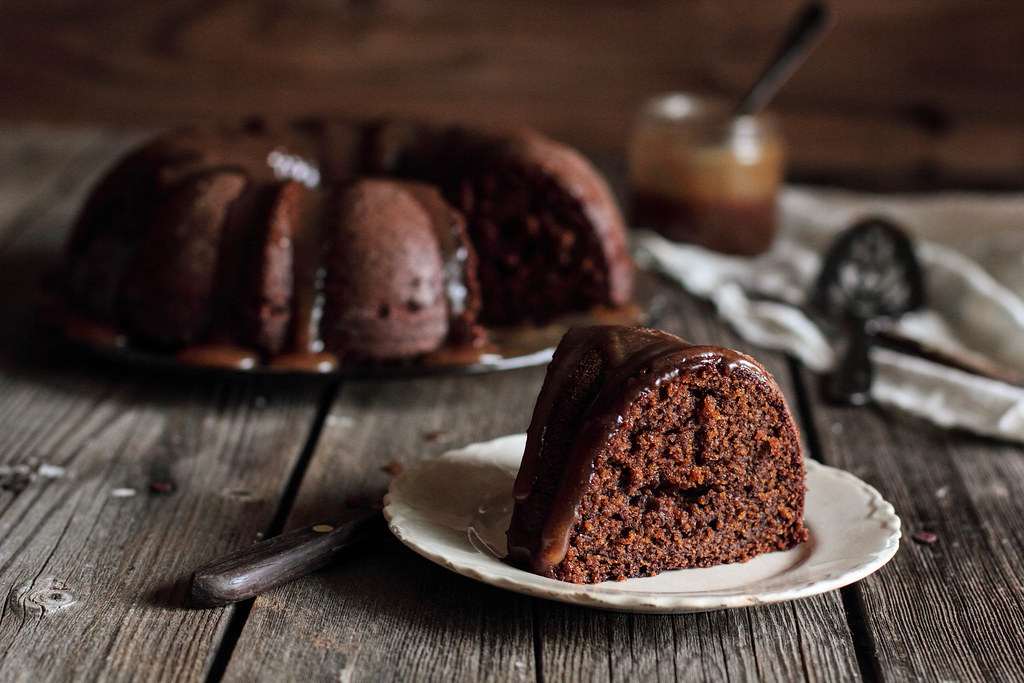
When my travel-weary mother stepped into my kitchen for the first time, I dusted off my apron and welcomed her into my new home. I made tea and sliced the cake. We spent the next few hours catching up over warm pastries and caramel—the perfect therapy for a mother and daughter who had missed each other.
The experience of my grandmother, the guidance from my mother and the wit of Julia Child taught me how to bake (and reminded me never to take food too seriously). Even though there was only one set of hands working in my small kitchen, a chorus of voices filled the air, directing me along my course. The wisdom from these women in my life was a simple reminder that even in an unfamiliar place, I was never truly alone in the kitchen.
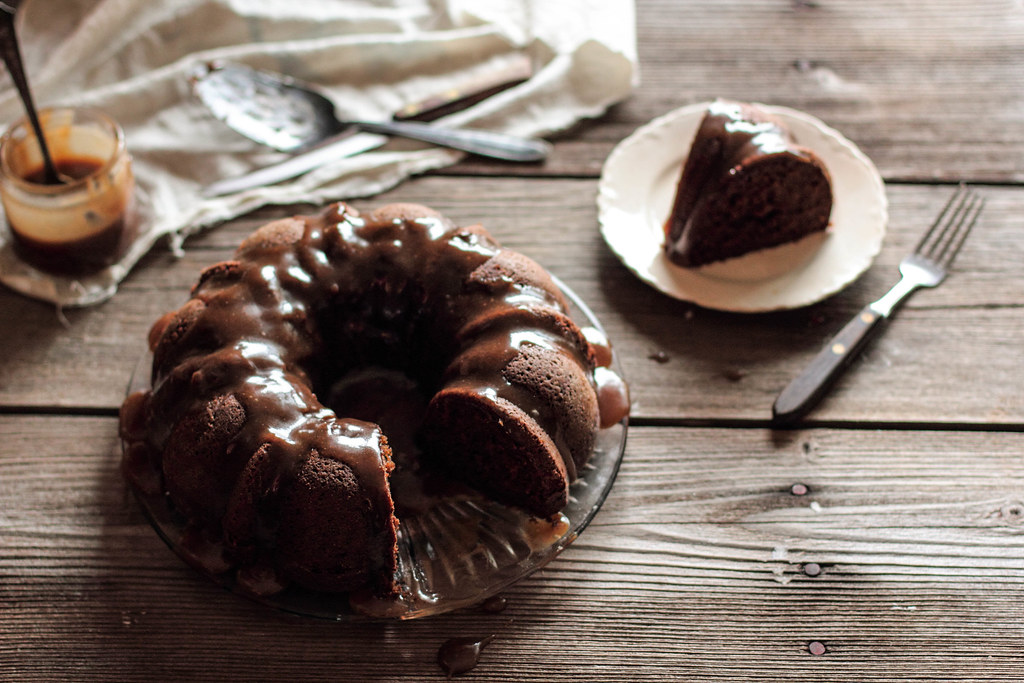
Gingerbread Bundt Cake with Pear Caramel Sauce is a cozy treat to enjoy on frosted nights. The flavors of fresh ginger and molasses harmonize together in this dark, spiced cake. The addition of sour cream and a handful of spices lend a rich moistness to the cake while rounding out the flavor. Just before serving, the cake is glazed with a pear caramel sauce to add the right touch of sweetness. The caramel is made from a pear juice reduction—eliminating the need for a candy thermometer—making this cake as easy to prepare as it is to devour.
Click to read more ...
 03.9.2014
03.9.2014 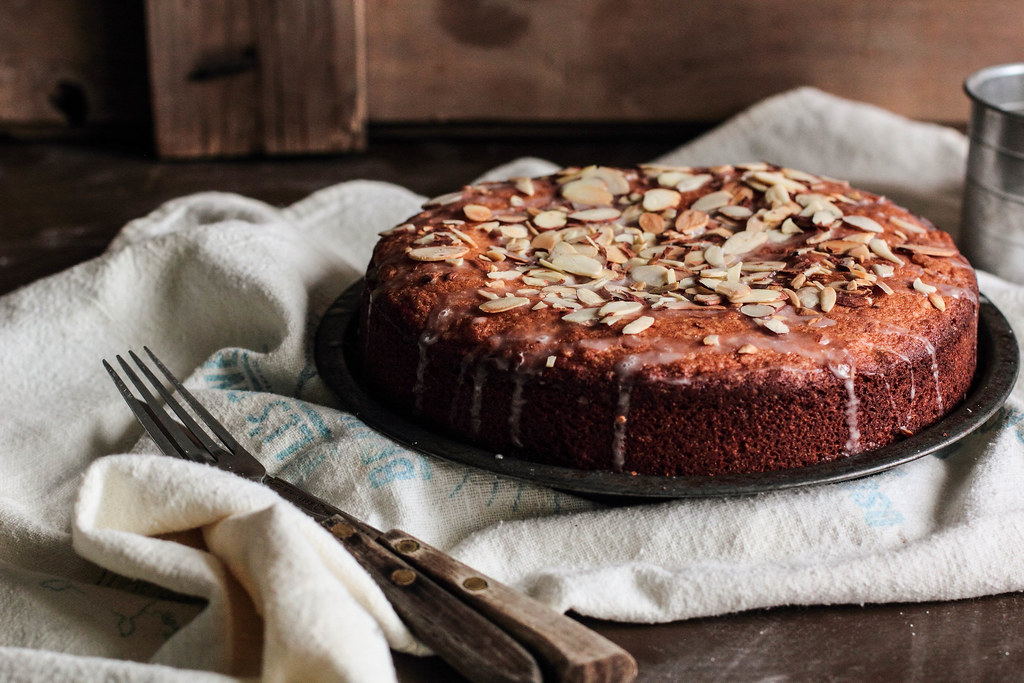
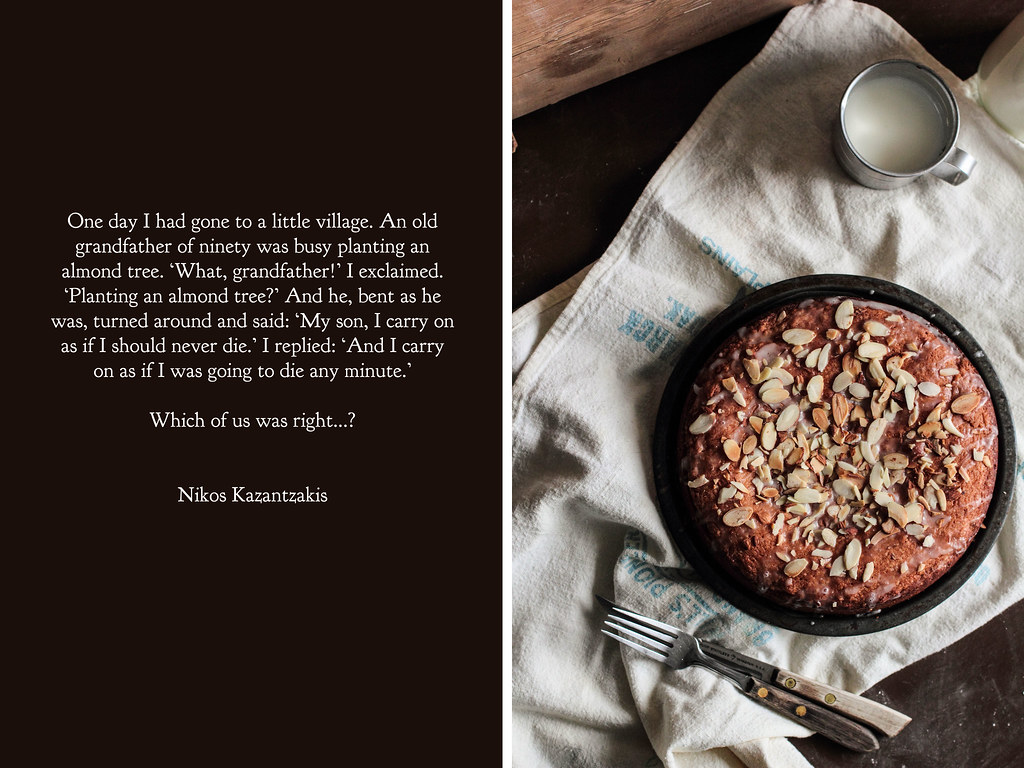
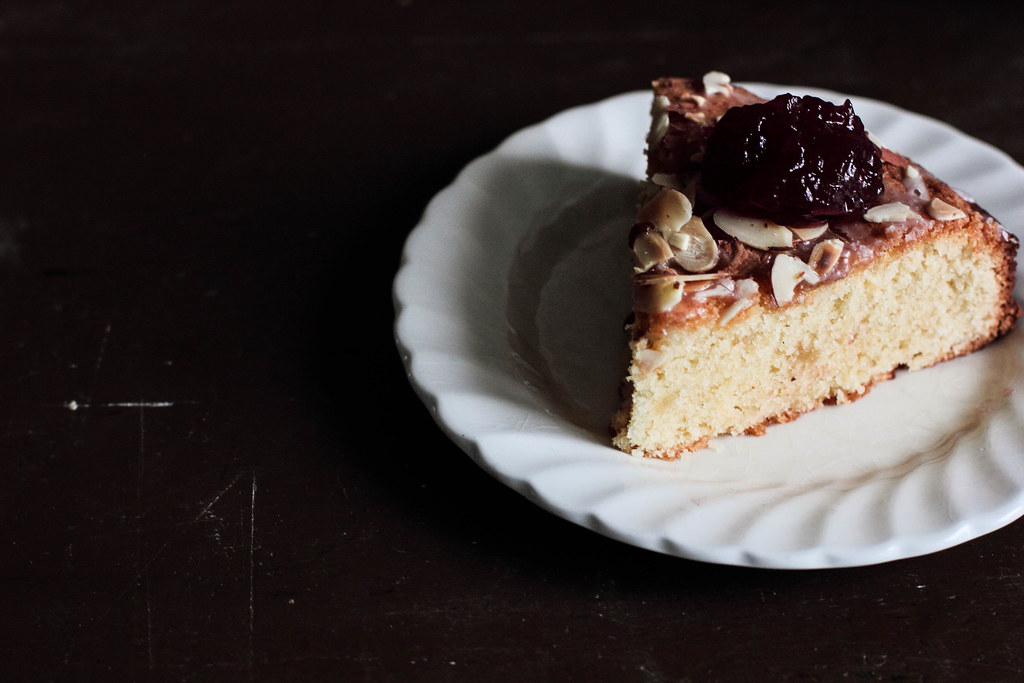
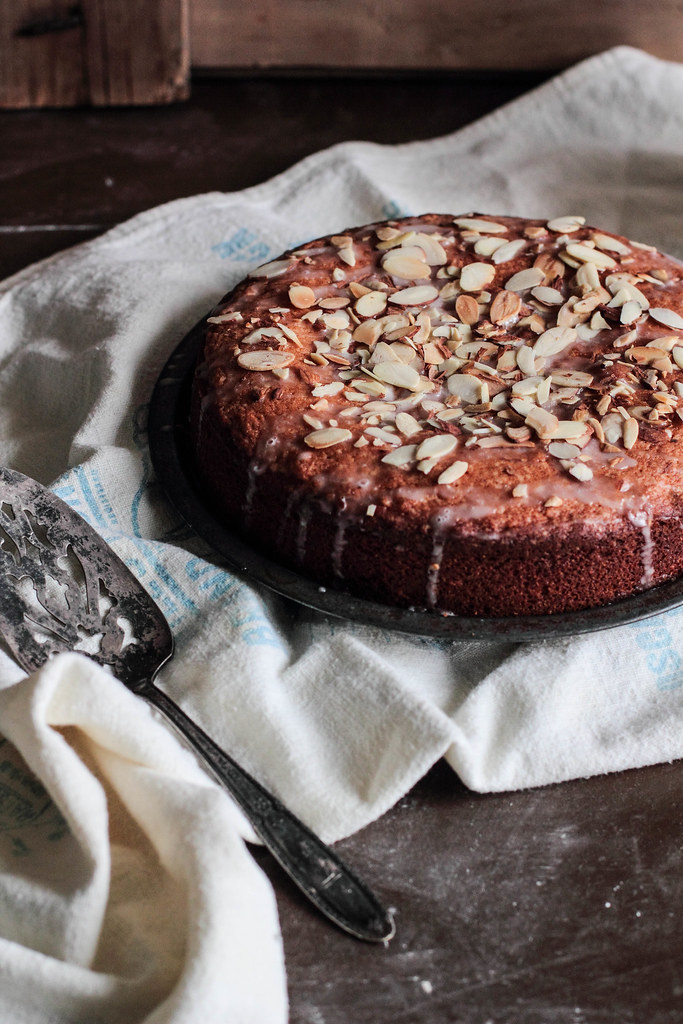
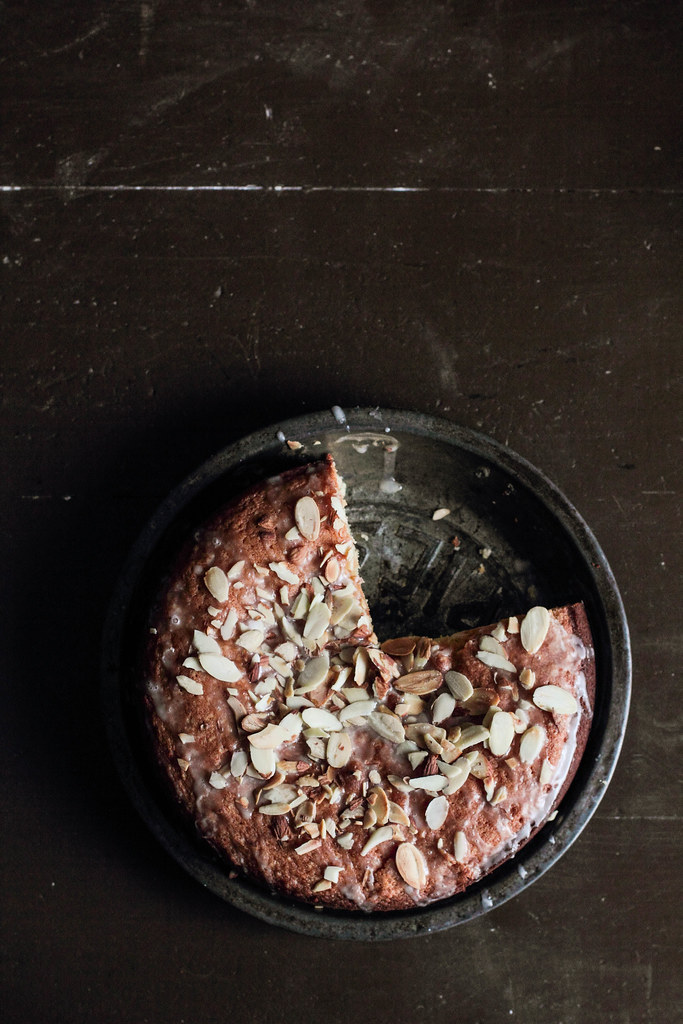
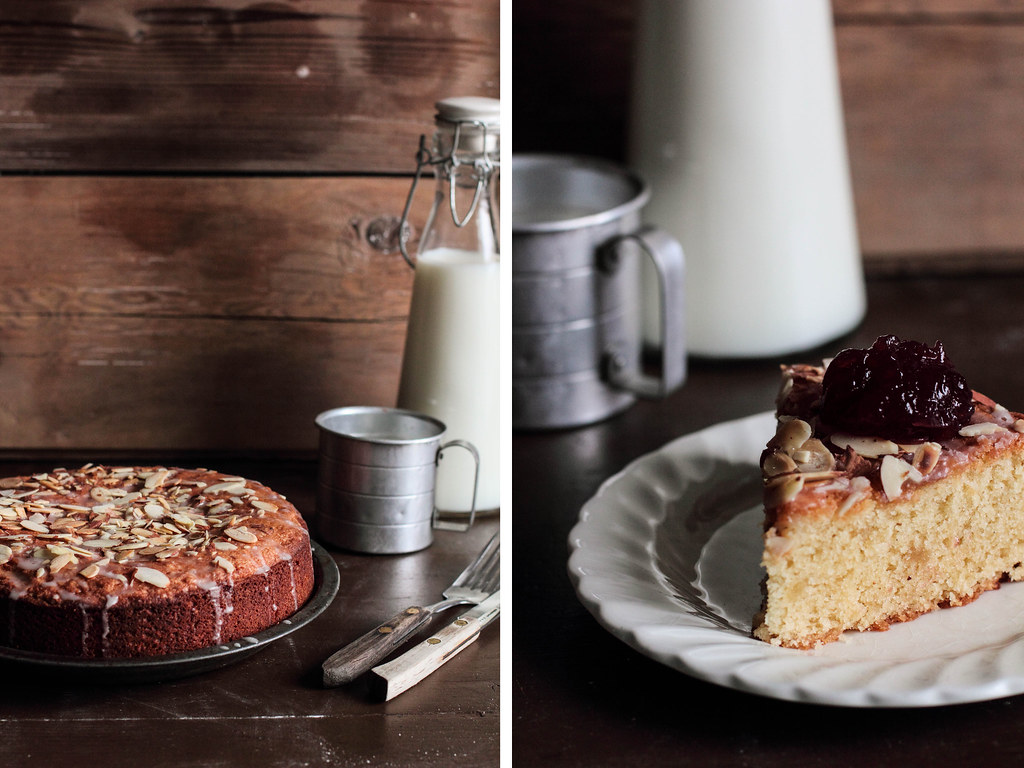
 almonds,
almonds,  cake,
cake,  vanilla bean in
vanilla bean in  cake/cupcakes
cake/cupcakes 







